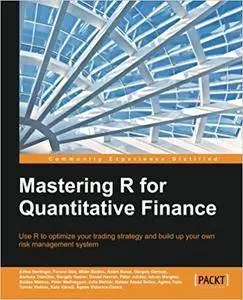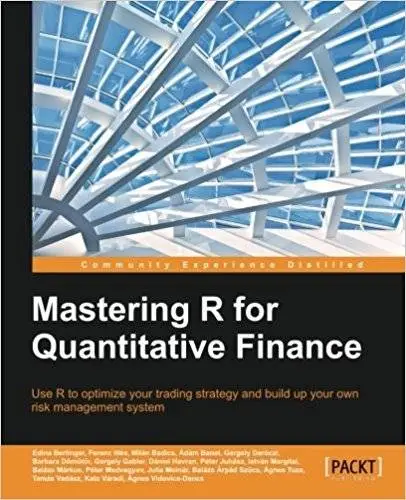Mastering R for Quantitative Finance
by Ferenc Illes and Edina Berlinger
English | 2015 | ISBN: 1783552077 | 346 Pages | Mobi/Code Files | 15/8.5 MB
by Ferenc Illes and Edina Berlinger
English | 2015 | ISBN: 1783552077 | 346 Pages | Mobi/Code Files | 15/8.5 MB
This book is intended for those who want to learn how to use R's capabilities to build models in quantitative finance at a more advanced level. If you wish to perfectly take up the rhythm of the chapters, you need to be at an intermediate level in quantitative finance and you also need to have a reasonable knowledge of R.
What You Will Learn:
- Analyze high frequency financial data
- Build, calibrate, test, and implement theoretical models such as cointegration, VAR, GARCH, APT, Black-Scholes, Margrabe, logoptimal portfolios, core-periphery, and contagion
- Solve practical, real-world financial problems in R related to big data, discrete hedging, transaction costs, and more
- Discover simulation techniques and apply them to situations where analytical formulas are not available
- Create a winning arbitrage, speculation, or hedging strategy customized to your risk preferences
- Understand relationships between market factors and their impact on your portfolio
- Assess the trade-off between accuracy and the cost of your trading strategy
R is a powerful open source functional programming language that provides high level graphics and interfaces to other languages. Its strength lies in data analysis, graphics, visualization, and data manipulation. R is becoming a widely used modeling tool in science, engineering, and business.
The book is organized as a step-by-step practical guide to using R. Starting with time series analysis, you will also learn how to forecast the volume for VWAP Trading. Among other topics, the book covers FX derivatives, interest rate derivatives, and optimal hedging. The last chapters provide an overview on liquidity risk management, risk measures, and more.
The book pragmatically introduces both the quantitative finance concepts and their modeling in R, enabling you to build a tailor-made trading system on your own. By the end of the book, you will be well versed with various financial techniques using R and will be able to place good bets while making financial decisions.



